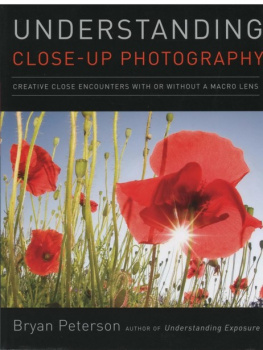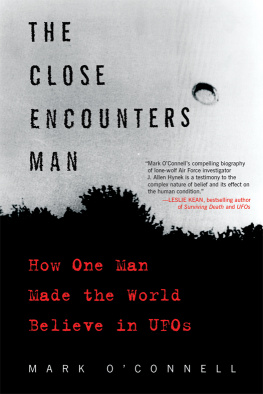Laura Pesce - Close Encounters of Art and Physics
Here you can read online Laura Pesce - Close Encounters of Art and Physics full text of the book (entire story) in english for free. Download pdf and epub, get meaning, cover and reviews about this ebook. publisher: Springer International Publishing, genre: Non-fiction. Description of the work, (preface) as well as reviews are available. Best literature library LitArk.com created for fans of good reading and offers a wide selection of genres:
Romance novel
Science fiction
Adventure
Detective
Science
History
Home and family
Prose
Art
Politics
Computer
Non-fiction
Religion
Business
Children
Humor
Choose a favorite category and find really read worthwhile books. Enjoy immersion in the world of imagination, feel the emotions of the characters or learn something new for yourself, make an fascinating discovery.
- Book:Close Encounters of Art and Physics
- Author:
- Publisher:Springer International Publishing
- Genre:
- Rating:3 / 5
- Favourites:Add to favourites
- Your mark:
- 60
- 1
- 2
- 3
- 4
- 5
Close Encounters of Art and Physics: summary, description and annotation
We offer to read an annotation, description, summary or preface (depends on what the author of the book "Close Encounters of Art and Physics" wrote himself). If you haven't found the necessary information about the book — write in the comments, we will try to find it.
Close Encounters of Art and Physics — read online for free the complete book (whole text) full work
Below is the text of the book, divided by pages. System saving the place of the last page read, allows you to conveniently read the book "Close Encounters of Art and Physics" online for free, without having to search again every time where you left off. Put a bookmark, and you can go to the page where you finished reading at any time.
Font size:
Interval:
Bookmark:


Cover illustration: Dark Energy - acrylic paint on canvas - Laura Pesce (2012)
This Springer imprint is published by the registered company Springer Nature Switzerland AG.
The registered company address is: Gewerbestrasse 11, 6330 Cham, Switzerland

I have been thinking about writing this book for quite a long time. Unfortunately, I could not find enough free time to do it. Then, I thought, what is time after all, only an illusion, even if it is a stubborn one, and difficult to avoid as Einstein affirmed.
Finally, I decided to enter into this illusion of time, and I started to scribble some thoughts in a notebook and, at the same time, I was making drawings to describe what I was thinking in a more visual way. Then I found out that, with a combination of reading popular books about physics and drawing and painting in various ways about what I was reading, I could seriously start to write a book about the parallel between art and physics. I have always been more attracted to experiment than to theory, so writing a book appeared quite challenging to me. Many ideas about this parallelism were crowding my mind, but when I finally started, I realized that I needed some help. In fact, the writing of this book would not have been possible without help from physicists, and they showed admirable patience when I asked them to explain these difficult scientific theories to me in simple terms. Therefore, I sincerely thank all the physicists I had the good fortune to meet, and with whom I discussed, and from whom I learned these exciting abstract concepts of science.
First of all, I thank my husband Thomas Elze, who was the first to kindle in my mind an interest in the beauty and mystery of a largely unseen world.
I thank Julian Barbour for giving me his book, The End of Time , written for the general public. It was the first book about physics that I read and could understand and learn from.
Many thanks also to James (Jim) Hartle, who introduced me to the theory of the Boundary of Space-Time, and for his patience in taking time to explain it to me. And a special thank you to Jim for writing his equation on the composition inspired by his theory.
I thank Hagen Kleinert, an extraordinary physicist with a great sense of humour, and a not too bad opera singer, for the many discussions that we had regarding his theory of the world crystal.
I would particularly like to thank Gerard t Hooft, a Nobel laureate with a warm personality and a great appreciation of the arts. I am especially grateful to Professor t Hooft for the many interesting conversations we had.
I thank Christof Wetterich for his great patience in explaining to me the significance of his quintessence, leading my imagination towards the dark energy of the cosmos.
I thank Gabriele Veneziano who with his wonderfully scientific and philosophical public talk Before the big bang, a history longer than time introduced me to the appealing possibility of a cyclical Universe and thus of its eternity.
I thank Giuseppe Vitiello, Peppino, for bringing me back from the mystery of the Universe to the great mystery of our brains.
I thank George Ellis, nice George, whom I had the pleasure of meeting recently, for giving me the possibility to learn about physics through illuminating philosophical conversations.
Last but not least, I would like to mention a great and very special man, Professor Tom Kibble. I dedicate to him, to his memory, two of my glass works, Symmetry and Broken Symmetry.
And special thanks to Angela Lahee, the editor who believed in my idea of writing a book about art and physics and gave such apposite suggestions about the writing of this book.
Close Encounters of Art and Physics is divided into two parts.
The first is a historical voyage between art and physics, and an attempt to envision a parallel between these two realms: starting from the primordial eras of human history, up until our own epoch.
The second part is dedicated to what I call a collaboration with physicists: a learning approach through conversations, with many questions from my side, and explanations about their research from theirs.
And finally, I hope that through my illustrations the attempt to translate scientific theories into visual forms has been relevant to the various subjects discussed with the scientists themselves.
Writing this book has been a pleasure, especially because of the help and collaboration with these physicists. It has been an exciting learning experience and, more than anything else, I have really enjoyed myself.
Campiglia Marittima
January 2019
As a child I very much enjoyed playing with toys, as all children do. However, I did not just play with my favourite toys, I was also very curious to take them apart. The reason behind this strange curiosity was definitely not due to any violent tendency! I really wanted to find out what was actually inside of them.
How they were assembled and why they, the creators of the toys, had made them that way. To satisfy my curiosity I took apart almost all my toys, including dolls, little trains and cars, stuffed animals, and spinning tops. The latter, in particular, attracted my attention, for it was amazing how they could spin so fast by standing on a thin piece of metal.
The beauty of the objects, at that time, played a secondary role. The main interest was how and why the toys were made that way. Of course, it was all part of being a child.
My family thought that eventually I could become a medic, or even a scientist. It did not happen the way they wished. I became an artist instead.
Font size:
Interval:
Bookmark:
Similar books «Close Encounters of Art and Physics»
Look at similar books to Close Encounters of Art and Physics. We have selected literature similar in name and meaning in the hope of providing readers with more options to find new, interesting, not yet read works.
Discussion, reviews of the book Close Encounters of Art and Physics and just readers' own opinions. Leave your comments, write what you think about the work, its meaning or the main characters. Specify what exactly you liked and what you didn't like, and why you think so.













